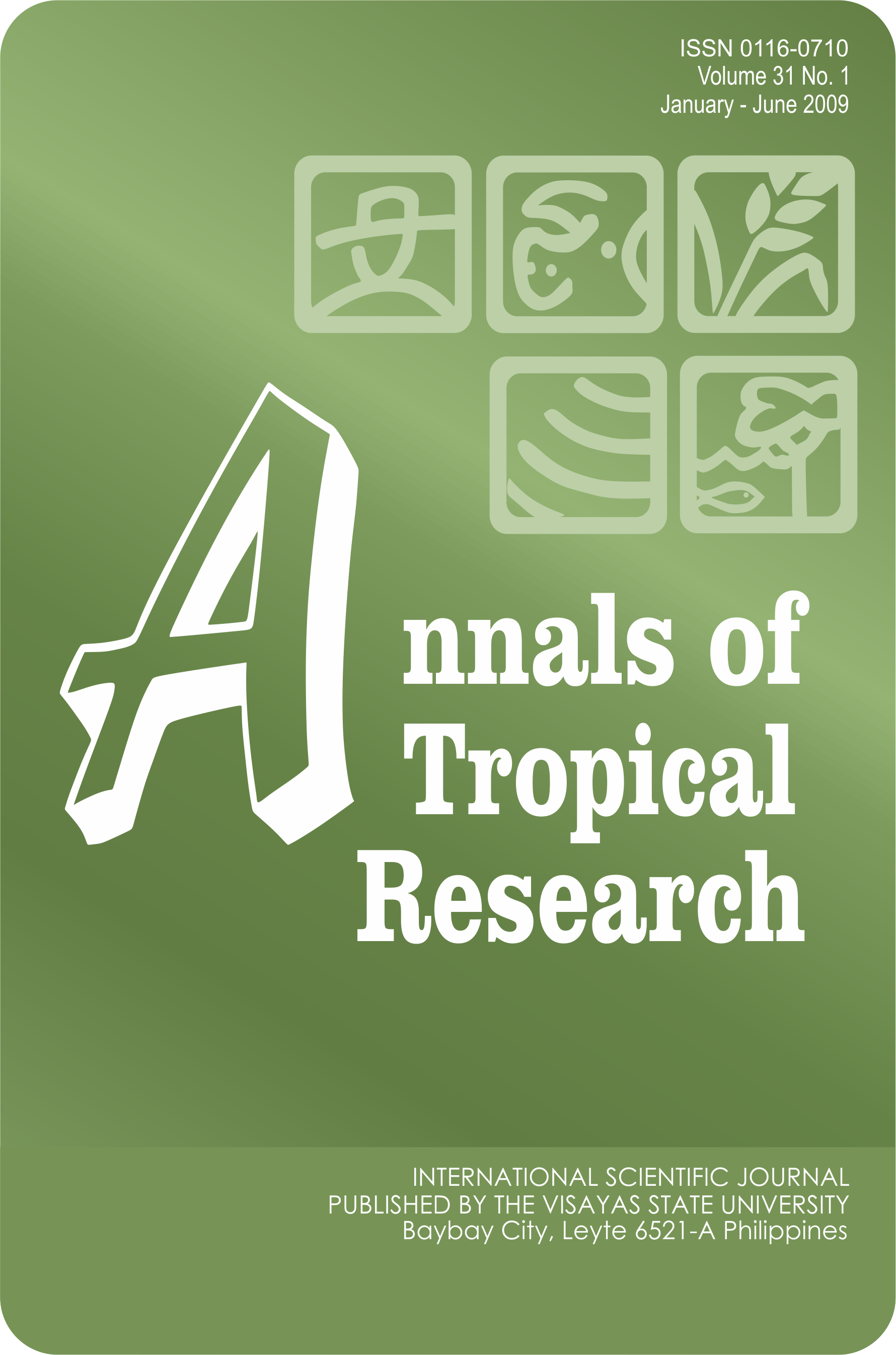Allelochemicals from the leaves of Tamarindus indica L.
DOI:
https://doi.org/10.32945/atr3113.2009Keywords:
Tamarindus indica L., allelochemicals, caffeic acid derivative, agrochemicals, antimicrobial activityAbstract
Potent biopesticides with strong antimicrobial activity as well growth inhibitory activity has been isolated and purified from the Ethyl Acetate Fraction (TrEAF) of tamarind leaves. Chromatographic analyses (TLC, UV, MS, NMR, and IR) indicated the presence of putative caffeic acid derivative in Tamarind leaves. Aspergillus tamarii was highly sensitive to TrEAF compound at all concentrations (500 ppm, 1000 ppm, 1500 ppm and 2000 ppm) than Aspergillus fumigatus, Aspergillus niger. In Aspergillus tamarii and , Aspergillus niger, 1500ppm concentration was very much sensitive to TrEAF compound. Cercina lutia, Staphylococcus aureus, Micrococcus roseus and Pseudomonas sp were much more sensitive to TrEAF compound than Escherichia coli. No effect of TrEAF compound was detected in E. coli at concentration of 1000ppm. When isolated and purified by fractionation and column chromatography, this active TREAF compound showed concentration-dependent inhibitory/stimulatory activity on rice seeds. At concentration of 1000ppm, it showed 53.81% inhibition on shoot length and 58.85% inhibition in root length. At 500ppm concentration, 29.01% inhibition in shoot length and 38.82% inhibition in root length have been detected. Very slight stimulation on shoot length was observed at 7.81 ppm. It showed no effect on the germination of rice seed.
Downloads
Submitted
Published
How to Cite
Issue
Section
License

This work is licensed under a Creative Commons Attribution-NonCommercial-ShareAlike 4.0 International License.











